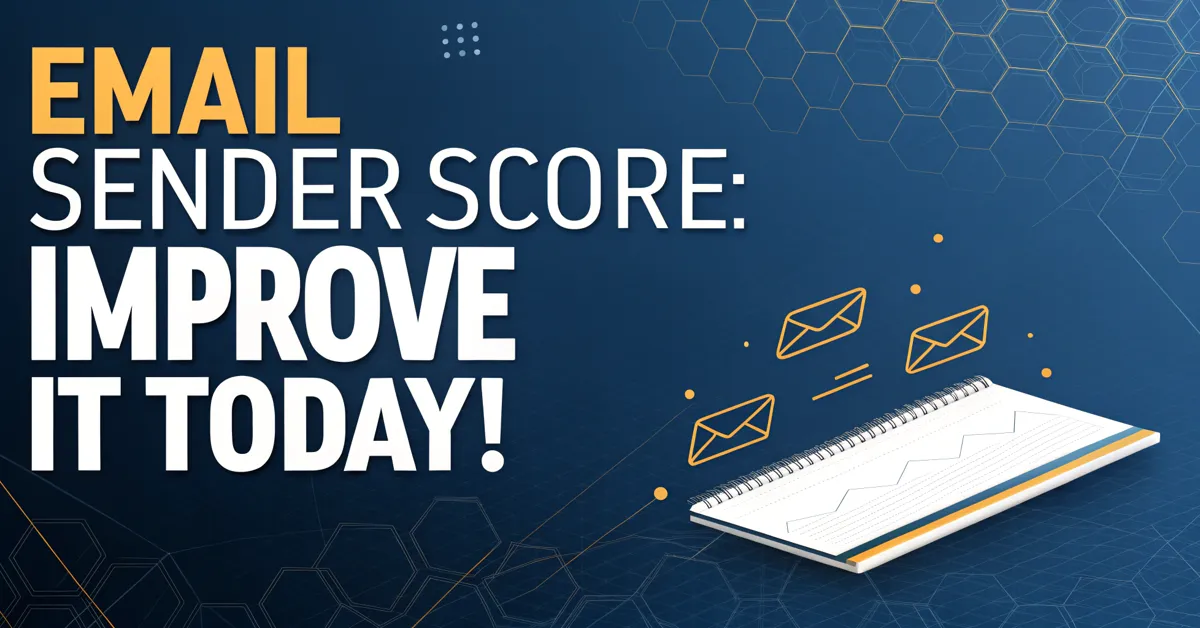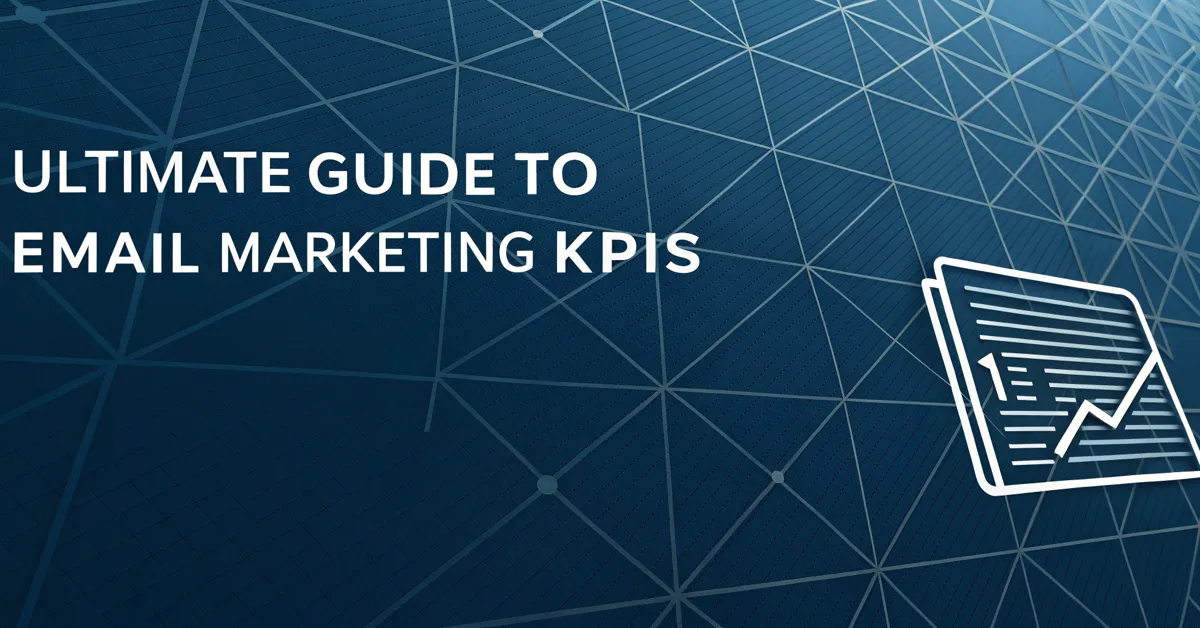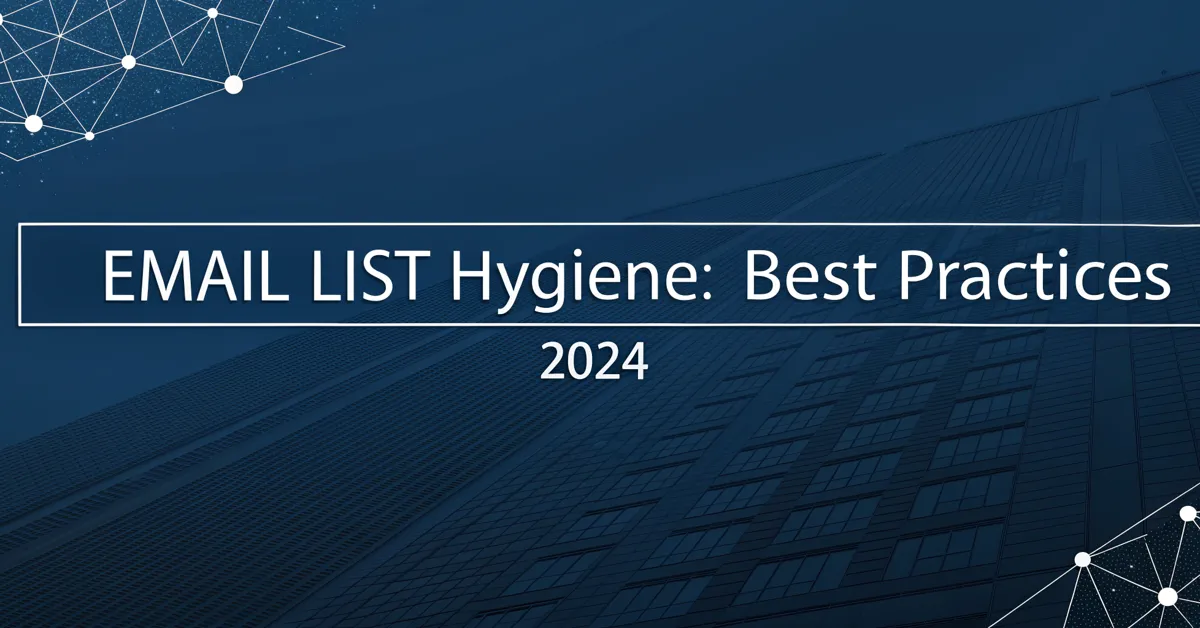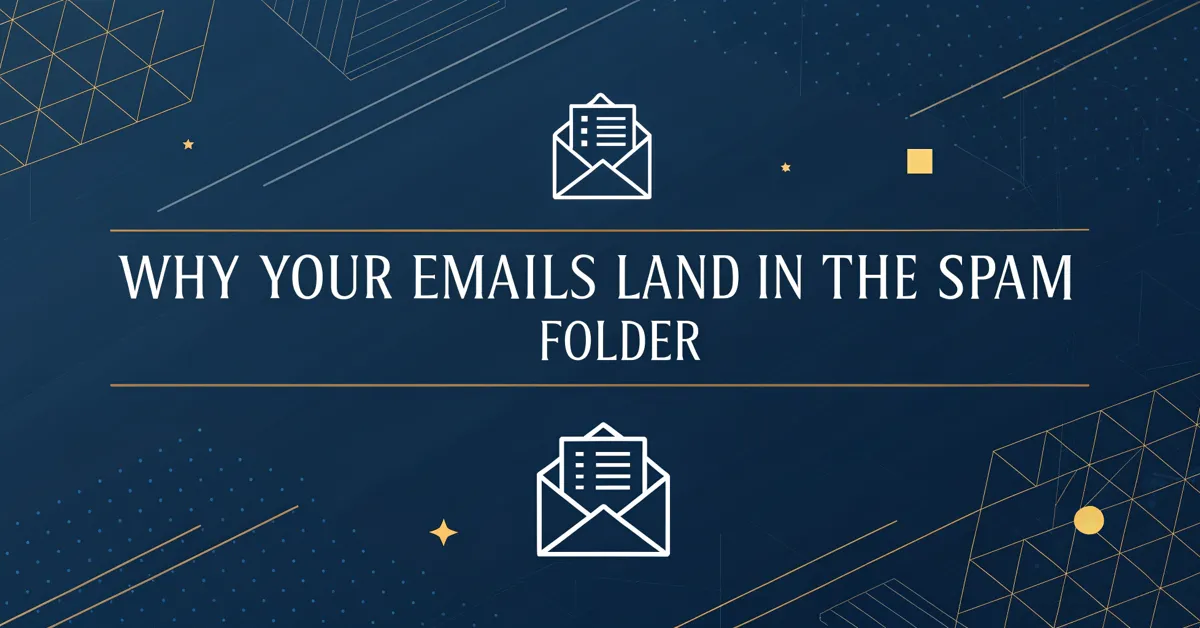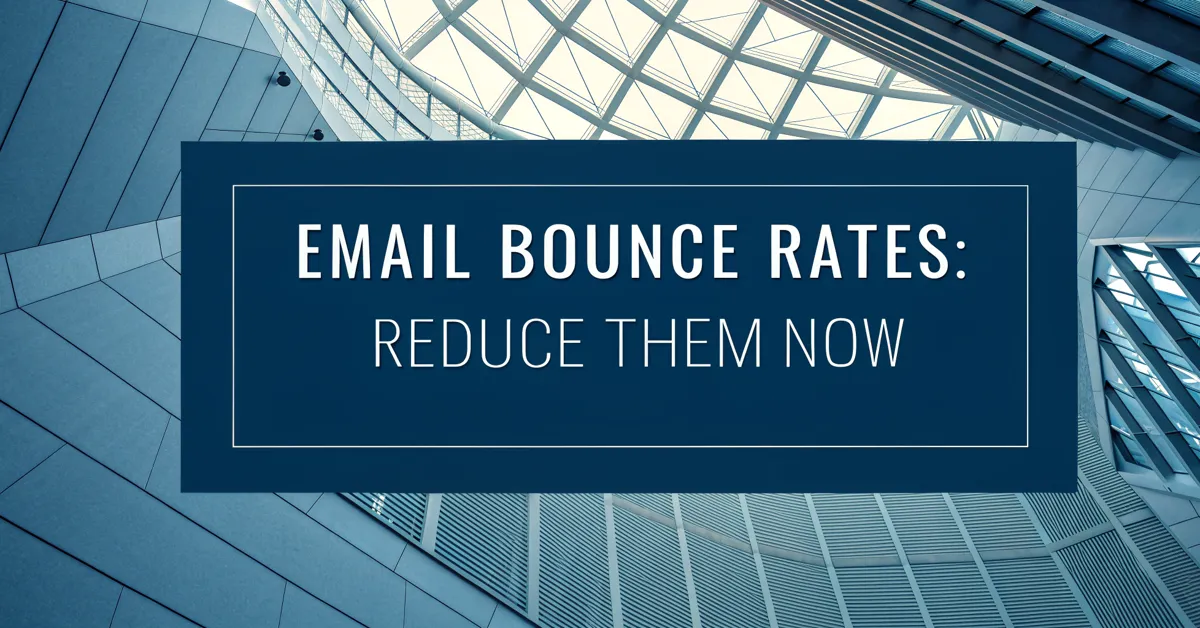Is your email ending up in the spam folder? Are you seeing low engagement rates? It might be time to take a hard look at your email sender score. This number, often hidden from plain sight, plays a big part in whether your messages reach the inbox or get lost in the void. It’s like your email’s credit rating; a high score opens doors, and a low one slams them shut.
Think of your email sender score as a measure of your email reputation. It is how internet service providers (ISPs) see you. It is not a single universal number. Different services may have their own methods for scoring you. But the core idea remains the same: a high score says you’re a trustworthy sender. And a low score? That’s a red flag. It can impact delivery, click rates, and just about every metric you’re trying to improve.
This article is your guide to understanding and boosting your email sender score. We’ll break down what it means, why it matters, and give you simple steps you can take now to see real results. If you’re ready to get your emails into inboxes, read on.
What is an Email Sender Score?
An email sender score, also called sender reputation, is a measure of how trustworthy your email server is. It’s like a credit score for your email sending practices. This score is not set by one single authority. Instead, ISPs and email providers use various factors to figure out how likely it is you’re sending emails people actually want. These scores are based on a mix of data, from how your recipients engage with your emails to whether your server is blacklisted.
ISPs check this score to decide whether to send your email to the inbox, the spam folder, or block it completely. A higher score tells them you follow best practices, send emails to people who asked for them, and keep your list clean. A low score suggests the opposite: You could be sending unwanted emails, not taking care of bounces, or using poor sending methods.
It’s not a visible number, not like a bank balance or a social media count. But it’s there and it plays a big part in your email’s success.
The Key Factors That Affect Your Score
Several key factors affect your email sender score. Keeping these in mind is a must for improving your score:
- Bounce Rate: When an email can’t be delivered. This can be due to a bad email address or a full inbox. A high bounce rate can hurt your sender score.
- Spam Complaints: When recipients mark your email as spam, this is a big red flag. High spam complaint rates make email providers block your messages.
- Engagement Metrics: How recipients interact with your emails. Open rates, clicks, and forwards signal to email providers that you’re sending content people like and want to see.
- Blacklisting: Being added to a blocklist because of poor sending practices will crush your sender score. It’s a tough spot to come back from.
- Sending Volume: A sudden jump in your sending volume can raise red flags. ISPs see this as a sign of spam. It’s best to start with lower volume and increase slowly.
- Authentication: Using email authentication methods such as SPF, DKIM, and DMARC. These show that you’re really who you claim to be.
- Email List Quality: Sending emails to people who asked to receive them. The more active and clean your list is, the better your score.
Why Does a Good Sender Score Matter?
A good sender score is key to making sure your emails reach your audience. It’s the gatekeeper to the inbox. Here are a few reasons why this score matters:
- Higher Delivery Rates: A better score means more of your emails will go to the inbox. Less email being sent to the spam folder means more people are going to see your emails.
- Better Open Rates: With emails in the inbox, more of your recipients will see and open them. If emails land in the spam folder, they will most likely never be opened.
- Increased Click-Through Rates: When emails land in the inbox and are opened, readers are more likely to interact. This means more clicks to your links and more people who get your message.
- Enhanced ROI: Higher engagement means a better return on investment for your email marketing efforts. Your emails are doing the work you meant them to do.
- Brand Reputation: A good email sender score keeps your brand’s reputation strong and trustworthy. It avoids spam folders and helps your audience see you as a quality sender.
How to Check Your Email Sender Score
Checking your email sender score can feel a bit like trying to peek behind a curtain. It’s not always obvious. There’s no single spot where you’ll find one number, but there are tools and methods you can use to get a good sense of where you stand. Here are some ways to check your sender score:
Use Sender Score Tools
There are tools to help you get a look at your sender score:
- Sender Score: This is a free service by Validity that gives you an overview of your email reputation. It takes a look at several factors that decide your score.
- Mail Monitor: From Mailgun, this free tool tests a message for spam issues and checks your sending domain’s reputation.
- Talos Reputation Center: From Cisco, this is a free tool that gives you access to their threat intelligence data. It offers details about your email sender reputation.
These tools often show your IP address reputation, your domain reputation, and give details on blacklists or issues that may be hurting your score. They give a quick look at what ISPs are seeing.
Check for Blacklists
Being on an email blacklist is like getting a bad mark on your record. It’s a sign of poor email sending behavior. You can check if your IP or domain is on a blacklist by using these tools:
- MXToolBox: This free tool does a quick scan of your IP address against many blocklists.
- MultiRBL: It checks your domain against a large number of real-time blacklists. It gives you a report on where you’re listed.
- WhatIsMyIPAddress: This tool lets you check if your IP address is on any known blacklists.
If you find that you’re on a blacklist, take steps to get removed from it fast. Being on a blacklist will hurt your sender reputation.
Monitor Your Email Metrics
Watching your email metrics can give you real-time data on your sender score, even if you don’t see the number. Keep an eye on these metrics:
- Bounce Rate: A high bounce rate can mean your sender reputation may be slipping.
- Spam Complaint Rate: A high rate of spam complaints is an obvious sign that people don’t want your emails.
- Open and Click-Through Rates: Low open and click rates can point to a poor sender score. If people are not engaging, email providers may see your emails as unwanted.
Your email service provider (ESP) dashboard is a good place to monitor these metrics. They give clear signs of how you are doing. Use this data to improve your email practices.
Use Email Authentication Tools
Email authentication methods can show email providers that you are a legit sender. Tools to use are:
- SPF (Sender Policy Framework): This record states the mail servers that are allowed to send emails on behalf of your domain.
- DKIM (DomainKeys Identified Mail): This adds a digital signature to your emails. It shows that the message is from you and hasn’t been changed.
- DMARC (Domain-based Message Authentication, Reporting, and Conformance): This works with SPF and DKIM. It tells receiving email servers what to do with emails that don’t pass authentication checks.
Setting up these methods will help your emails seem more reliable and will improve your sender reputation.
How to Improve Your Email Sender Score
Improving your email sender score isn’t a one-time thing. It’s a steady process of following best practices, watching your data, and making changes. Think of it like keeping your car in top shape. It takes ongoing effort to keep things running smooth. Here are some steps you can take to boost your email sender score:
Clean Your Email List
A clean list is the base of a good email sender score. It means you are sending emails to people who actually want them. Remove inactive subscribers, hard bounces, and people who have not given you express consent to send them emails:
- Remove Hard Bounces: Hard bounces are emails that are not valid and will never be delivered. Your ESP should do this for you.
- Remove Inactive Subscribers: Use data from your ESP to find and remove subscribers who have not opened or clicked on your emails in a set amount of time.
- Double Opt-In: Make subscribers confirm their email addresses before adding them to your list. This makes sure they want to receive your emails.
Cleaning your list is not a one-time job; it must be done often. An active and clean list is worth more than a large list that has many inactive people.
Authenticate Your Emails
Setting up email authentication is a must. It helps ISPs make sure you’re really who you say you are. This builds trust and improves deliverability. Set up these authentication methods:
- SPF (Sender Policy Framework): This states which mail servers can send emails from your domain. It helps stop spoofing.
- DKIM (DomainKeys Identified Mail): This uses a digital signature to show that your emails are real and haven’t been changed.
- DMARC (Domain-based Message Authentication, Reporting, and Conformance): This policy lets ISPs know how to handle emails from your domain that fail SPF and DKIM checks.
These methods help protect your email and build a strong sender reputation.
Manage Sending Frequency
How often you send emails can impact your score. Too many emails can upset your recipients, while too few emails may lead to lower engagement. Manage your sending frequency with these tips:
- Set Clear Expectations: Tell new subscribers how often you will be sending emails. Make it clear from the start.
- Use Segmentation: Segment your list based on subscriber actions and interests. This means sending content that is more relevant to them.
- Monitor Engagement: Adjust your sending frequency based on subscriber actions. If some people are not engaging, it may be best to send them fewer emails.
- Avoid Email Bursts: If you are sending a large number of emails, avoid doing it all at once. Instead, send them over a few hours or days.
By managing your frequency, you’ll keep your audience happy and lower the risk of spam complaints.
Use a Dedicated IP Address
If you’re sending a high volume of emails, consider using a dedicated IP address. This is an IP address only your emails will come from. With a dedicated IP, you are in control of your reputation. A shared IP could be hurt by other senders on the same address. Using a dedicated IP has its benefits:
- Control Over Reputation: You manage your reputation without being impacted by other senders’ practices.
- Improved Delivery: It gives you a better chance of landing in the inbox.
- Consistent Sending: Provides a consistent sending experience, which email providers prefer.
A dedicated IP is not needed for all senders. If you send a high number of emails, you will get more out of a dedicated IP than a shared one.
Warm-Up Your IP Address
If you’re new to email marketing or are using a new IP address, you need to warm it up. This involves slowly building up your sending volume over time. It helps you establish a positive reputation. To warm up your IP:
- Start Slowly: Don’t send a large number of emails at first. Start small and increase gradually.
- Send to Engaged Subscribers: At first, send emails to your most active subscribers. These people are most likely to interact with your emails.
- Watch Metrics: Keep a close eye on metrics like bounces, spam complaints, and engagement. Adjust your sending plan as needed.
- Be Patient: Warming up your IP takes time. Don’t hurry the process.
By warming up your IP correctly, you avoid spam flags and build a healthy sender reputation.
Monitor Spam Complaints
Spam complaints can hurt your sender score. It’s important to watch these and take steps to lower them. To manage spam complaints:
- Make It Easy to Unsubscribe: Give an easy way for subscribers to opt-out. A clear unsubscribe option is a must.
- Respect Unsubscribes: Always respect opt-out requests. Stop sending emails to those who unsubscribe.
- Manage Expectations: Make sure your subscribers know what they’re going to receive. Use a clear sign-up process.
- Review Your Content: Make sure your content is engaging, useful, and related to what your subscribers expect.
Lower spam complaints show email providers that people want your messages and you are doing good email practices.
Monitor Your Sending Reputation
Email sender reputation needs ongoing attention. Watch your metrics and keep making changes to keep your score high. To monitor:
- Use Sender Score Tools: Use sender score tools often. They help you track changes and fix issues.
- Watch Your Metrics: Keep an eye on your bounce rate, spam complaints, and engagement. Act on any issues you find.
- Check Blacklists: Make sure your IP and domain are not on any blocklists.
- Make Adjustments: Use data to make changes to your practices. Make your sending processes better over time.
By being on top of your sender reputation, you can catch problems fast and keep your score high.
Improve Your Email Content
The content of your emails can also play a part in your sender score. Sending relevant content to your subscribers will help with your engagement. Here is how you can improve the content of your emails:
- Personalize Content: If you use your subscriber’s names and give content that is based on what they like, they will be more engaged with your emails.
- Make Content Engaging: Use high-quality images and videos in your emails. It helps to make the content fun for your readers and encourages more clicks.
- Test Your Emails: Before sending, send test emails to yourself to view the look of your emails. It makes sure it shows up the way you want it to.
- Write Clear Subject Lines: Your subject lines have to be useful to the receiver so that they want to open and read them.
High quality content can help boost your engagement. It will keep you away from the spam folder and increase your sender score.
Common Mistakes That Hurt Your Email Sender Score
Even with your best efforts, some common mistakes can hurt your email sender score. Knowing what they are and how to avoid them is key to keeping a strong reputation. Let’s look at some of these mistakes:
Buying Email Lists
Buying email lists is one of the worst things you can do. These lists often have old, bad, or invalid email addresses, and the people on them never gave you consent to send them emails. Buying email lists results in:
- High Bounce Rates: A lot of emails will be rejected by servers, which hurts your sender score.
- Spam Complaints: People who never asked for your emails are more likely to mark them as spam.
- Poor Engagement: Since these people are not interested, they won’t open or click on your emails, signaling to providers that your emails are unwanted.
- Blacklisting: Because of poor results, email providers will most likely blacklist you.
It’s always best to build your email list using opt-in methods. This will help make sure the people who are on your list want to receive your emails.
Not Cleaning Your Email List
It’s best to clean your list on a regular basis. It does not matter how well you build your list, without cleaning your list you may be hurting your sender score. Here is what happens when you don’t clean your email list:
- Higher Bounce Rates: Bad email addresses stay on your list, which causes your bounce rates to go up.
- Lower Engagement: Sending to people who don’t engage brings down your average engagement metrics.
- Increased Spam Complaints: People who have become inactive or lost interest are more likely to mark your emails as spam.
Regularly remove hard bounces, people who unsubscribe, and inactive subscribers. It’s a vital part of maintaining a healthy list and high sender score.
Sending Too Many Emails
Sending too many emails can annoy your subscribers. It can lead to more spam complaints and a drop in engagement. Problems with sending too many emails include:
- Lower Open Rates: When people get too many emails, they may stop opening your messages.
- Increased Unsubscribes: Subscribers may choose to opt-out if they feel they are getting too many emails.
- More Spam Complaints: Annoyed subscribers are more likely to mark your emails as spam.
- Poor Engagement: Your engagement rates will go down, hurting your sender reputation.
Be respectful of your subscribers’ inboxes. Give them useful content without sending too many emails.
Neglecting Email Authentication
When you do not set up email authentication, you are more likely to hurt your sender score. Issues with neglecting email authentication are:
- Increased Spam Flags: ISPs are more likely to mark your messages as spam because you’re not showing who you are.
- Lower Delivery Rates: Messages can be sent to the spam folder, or blocked entirely.
- Spoofing: Without authentication, it can be easier for others to use your domain to send spam.
Setting up SPF, DKIM, and DMARC is vital for a strong email sender score and good deliverability.
Using Shared IP Addresses for High Volumes
If you send a large number of emails, using a shared IP address can hurt your sender score. Problems using shared IP addresses are:
- Reputation Risk: The bad habits of others using the same IP can hurt your sending reputation.
- Inconsistent Delivery: Your email delivery can be affected by others using the shared IP.
- Less Control: You don’t have control of your sending reputation.
For those sending a large number of emails, a dedicated IP is always the better option.
Sending Emails From a New Domain
A new domain does not have a sending history. Sending a high number of emails from a new domain too soon can be seen as spam. Issues include:
- Higher Spam Flags: Email providers don’t know your new domain, causing them to be suspicious of your emails.
- Lower Delivery Rates: Because they are not sure of your domain, providers will send them to the spam folder.
- Poor Engagement: Your engagement rates will likely be very low since many emails are not making it to inboxes.
When you use a new domain, warm it up slowly. Start with a small number of emails, and increase slowly while making sure to follow best practices for email sending.
Long-Term Strategies for Maintaining a Good Sender Score
A good sender score needs long-term attention. The steps you take now to build your score must be supported by long-term practices that keep your score healthy over time. Here are some long-term strategies for keeping a good sender score:
Consistent Monitoring and Adjustments
Your email sender score can change. Monitoring it and adjusting your actions is needed to ensure your reputation is healthy. To monitor and adjust:
- Regular Score Checks: Check your score often with available tools. This helps you catch any issues early.
- Track Engagement Metrics: Watch your open rates, click-through rates, bounce rates, and spam complaints. These metrics show the health of your sender reputation.
- Analyze Performance Data: Use your data to find trends and areas you can improve. Use A/B testing with different subject lines and content to see what works.
- Make Needed Adjustments: Change your sending practices based on the data you find. It will help keep your sender score high.
Being on top of your sending reputation means you’re ready to change your practices to get the best results over the long term.
Continuous List Hygiene
Your email list is not something you set once and never touch again. Continuous list cleaning is needed to make sure your email list stays in good health. To maintain a clean list:
- Regularly Remove Hard Bounces: These emails will never be delivered, hurting your sender score. Remove them often.
- Keep an Eye on Inactive Subscribers: Remove those who don’t open or interact with your emails. They add no value to your list.
- Give Clear Unsubscribe Options: Make sure people can easily remove themselves from your list. When they unsubscribe, they should be removed from your list.
- Double Opt-In: Use a double opt-in method to make sure that people on your list want to be there. It makes your email list healthier.
A healthy email list is a vital part of your email sender score and deliverability over time.
Ongoing Email Authentication Practices
Email authentication is not something you set up once and forget about. It must be an ongoing practice. To maintain your authentication, remember:
- Keep SPF, DKIM, and DMARC Records Current: As you change your email practices, make sure to keep your SPF, DKIM, and DMARC records up to date. It keeps your email practices secure.
- Check Authenticity Frequently: Make sure your authentication methods are working correctly. Fix any issues fast.
- Watch DMARC Reports: Keep an eye on DMARC reports. These can tell you if there are any authentication issues with your sending domain.
Consistent email authentication keeps your emails secure and gives a good sender score.
Using Segmentation and Personalization
Over time, segmentation and personalization are a great way to increase engagement. You can send emails that your subscribers want to see. To use this method long-term:
- Segment Your List: Segment your list based on action, demographics, and interests. This helps you send the right message to the right people.
- Personalize Email Content: Give emails that use your subscribers’ names and information. Personalized content is more useful.
- Dynamic Content: Use dynamic content that changes based on the subscriber’s information or engagement.
- Offer Subscriber Preferences: Allow your subscribers to choose the type of emails they want to receive. It helps them feel more in control.
Segmentation and personalization help to increase engagement, reduce spam complaints, and increase your email sender score over the long term.
Adapting to Industry Changes
The email marketing world is always changing. You need to stay on top of the changes and trends to keep your email practices at their best. Here is what to do:
- Watch Industry News: Keep an eye on industry news and best practices. This will help you change your email practices as needed.
- Stay Updated on Algorithm Changes: Email providers change their algorithms often. Learn about these changes to keep your sender score healthy.
- Adjust Your Strategies: Change your email strategies based on changes in the industry. Being flexible keeps your email strategy up-to-date.
By staying updated on industry trends, you’ll keep your email sending practices good, giving you a great email sender score over time.
Consistent Content Quality
The quality of your email content can impact your sender score over time. To maintain a high sender score, keep producing high quality content:
- Make Content Valuable: Make sure your content is useful and engaging for your subscribers. Useful content increases engagement.
- Consistent Tone: Keep your tone and brand consistent. Subscribers should be able to tell who the message is from.
- Use High-Quality Visuals: Use high quality images and videos.
- Test Your Content: Before sending your emails, test them to see how well they perform with different audiences.
High-quality content will keep your subscribers happy, boost engagement, reduce spam complaints, and keep your email sender score high over time.
Is Boosting Your Email Sender Score Worth It?
Improving and maintaining your email sender score takes work and focus. It’s a long-term process that needs effort. So, is all the effort worth it? The short answer is: yes. A strong email sender score brings very big benefits. Here are a few reasons why focusing on your sender score is worth the work:
Improved Email Deliverability
A strong sender score has a large impact on your deliverability. Emails sent from a sender with a low score have a higher risk of ending up in the spam folder or being blocked completely. Improved deliverability has several key benefits, including:
- Reach More Inboxes: More of your emails reach the main inbox rather than the spam folder.
- Increase Visibility: When more emails land in the inbox, more people will see them.
- Maximize Impact: When more people read your emails, more people get your message.
If your goal is to make sure your emails get seen, improving your sender score is a great start.
Increased Engagement Rates
When emails reach the inbox, it gives you more chances for engagement. You can see:
- Higher Open Rates: More of your emails will be opened when they reach the main inbox.
- Improved Click-Through Rates: When more people read your emails, it increases clicks on your links.
- Improved Forward Rates: People will share your emails with their friends, which gives your emails a wider reach.
Higher engagement helps to send better signals to email providers. It will help boost your sender score over time.
Enhanced Brand Reputation
Your sender score plays a big part in your overall brand reputation. A good score builds trust, while a bad score can hurt how people see your brand. The advantages of a good brand reputation are:
- Increased Trust: When people see your emails in the inbox, they are more likely to trust you.
- Strong Credibility: A good reputation makes you look more credible.
- Positive Perceptions: A strong sender score means your audience sees your brand in a better light.
A good sender score will keep your brand’s reputation strong over time.
Better ROI From Email Marketing
Improved delivery and engagement bring in better ROI from your email marketing efforts. Here are some of the benefits:
- More Conversions: When your emails reach the inbox and are engaging, it leads to more conversions.
- Better Return: Since you are getting more people to read and act on your emails, you will see a better return.
- Efficient Use of Resources: With emails working at their best, it reduces waste in time and money.
Improving your email sender score helps to get the most out of your email marketing. This is something every email marketer wants.
Avoiding Blacklists
A low sender score can cause your IP or domain to be blacklisted. Blacklists can bring big problems for your email campaigns. Some problems you will face if you’re blacklisted are:
- Big Delivery Issues: Your emails will be blocked by email providers, causing delivery issues.
- Reputational Damage: It will be tough to get your name off a blacklist. This can harm your reputation with your audience.
- Reduced Reach: Even if you do manage to get off the blacklist, it will take some time to rebuild your sender score.
Boosting your sender score helps you avoid the hassle of dealing with a blacklist and keeps your emails working at their best.
Building a Long-Term Email Strategy
Boosting your email sender score is a good step for a long-term email strategy. You can:
- Establish a Solid Base: You’ll build a base for a strong, long-term email program.
- Maximize Your Efforts: When your emails are working properly, your efforts will get you the best possible results.
- Adapt and Improve: A solid email strategy lets you change your practices. This makes sure your strategy stays good over time.
Focusing on your sender score not only helps improve your short-term results but also helps set a strong base for your long-term email marketing plans.
Final Thoughts: Your Email Sender Score and Your Success
Your email sender score is not just a technical detail. It’s a core part of your email marketing success. Think of it as the gatekeeper to your recipients’ inboxes. If you want your emails to be seen, you have to keep your sender score high. It’s like maintaining a high credit score; it opens doors and opportunities for you.
A poor sender score can cause your emails to be sent straight to the spam folder. Or even worse, blocked entirely. This hurts your engagement, lowers your ROI, and will cause harm to your brand reputation. The good news is, improving your sender score is within your reach if you take the right steps. With the steps in this article, you have everything you need to start boosting your sender score.
It’s not a set-it-and-forget-it type of thing. It needs steady work, ongoing attention, and the readiness to change your actions based on data. A great sender score will bring you better deliverability, increased engagement, and an increase in the ROI of your email campaigns. It’s an effort that’s worth the investment for a strong and sustainable email marketing program. So, if you’re serious about email marketing, make improving and maintaining your email sender score a priority today. Your emails and your business will benefit a lot.
